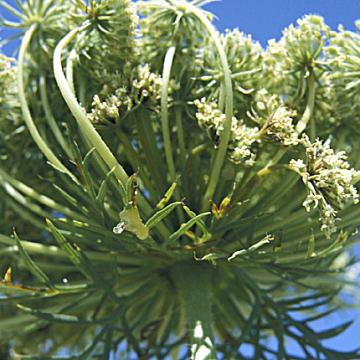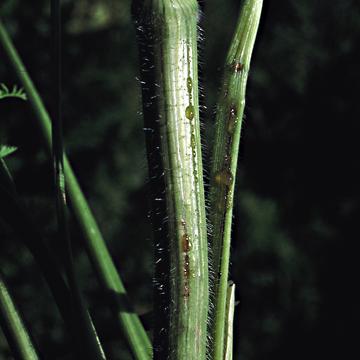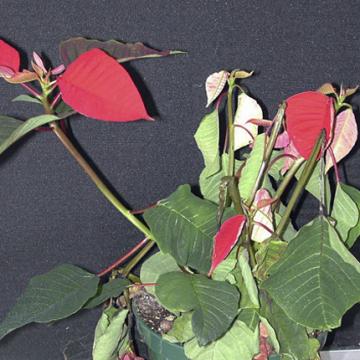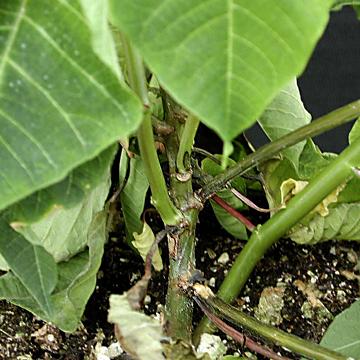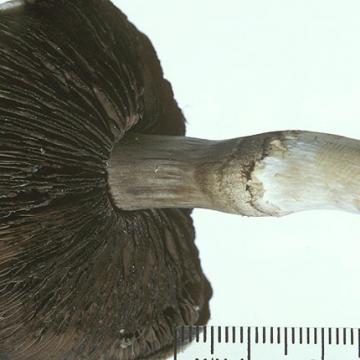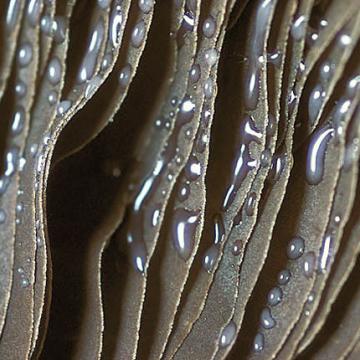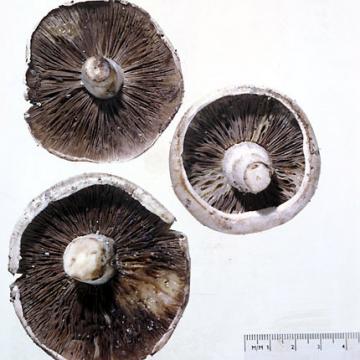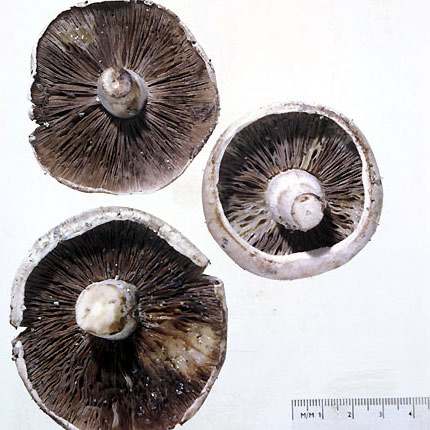DISEASE: Bacterial leaf blight
HOST: Carrot
Blight of flower parts.
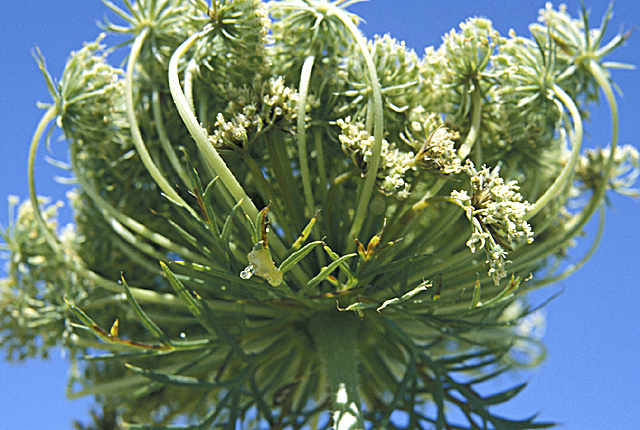
Bacterial leaf blight | Carrot
DISEASE: Bacterial leaf blight
HOST: Carrot (Daucus carota)
PATHOGEN: Xanthomonas hortorum pv. carotae
PATHOGEN SYNONYM: Xanthomonas campestris pv. carotae
SOURCE: N. Schaad
DISEASE: Bacterial leaf blight
HOST: Carrot
Leaf lesions begin as water-soaked spots that progress to small, yellow, angular spots and later expand to necrotic lesions with yellow halos.
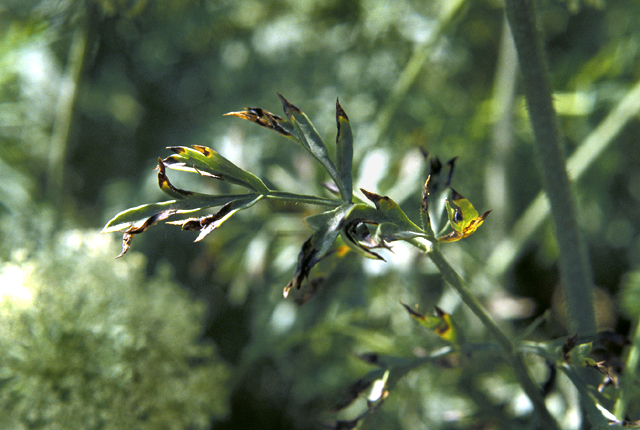
Bacterial leaf blight | Carrot
DISEASE: Bacterial leaf blight
HOST: Carrot (Daucus carota)
PATHOGEN: Xanthomonas hortorum pv. carotae
PATHOGEN SYNONYM: Xanthomonas campestris pv. carotae
SOURCE: N. Schaad
DISEASE: Bacterial leaf blight
HOST: Carrot
Bacterial ooze on flower stalk from systemic invasion of the pathogen.
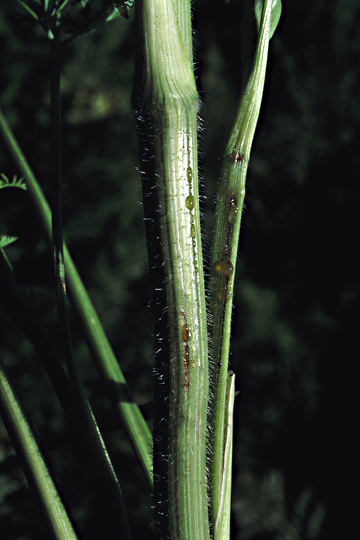
Bacterial leaf blight | Carrot
DISEASE: Bacterial leaf blight
HOST: Carrot (Daucus carota)
PATHOGEN: Xanthomonas hortorum pv. carotae
PATHOGEN SYNONYM: Xanthomonas campestris pv. carotae
SOURCE: APS
DISEASE: Bacterial stem rot
HOST: Poinsettia
Water-soaked and rotted stem and leaf tissues.

Bacterial stem rot | Poinsettia
DISEASE: Bacterial stem rot
HOST: Poinsettia (Euphorbia pulcherrima)
PATHOGEN: Dickeya dadantii
PATHOGEN SYNONYM: Erwinia chrysanthemi
SOURCE: M. Daughtrey
DISEASE: Bacterial stem rot
HOST: Poinsettia
The disease causes translucence, discoloration, and rot of stems.
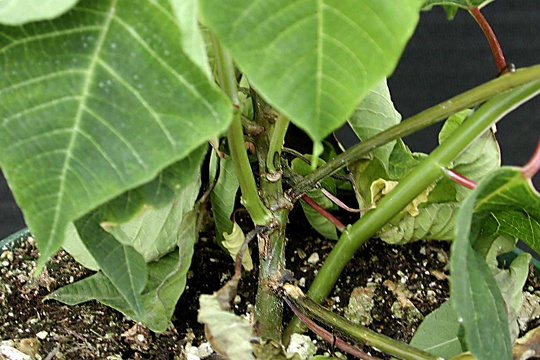
Bacterial stem rot | Poinsettia
DISEASE: Bacterial stem rot
HOST: Poinsettia (Euphorbia pulcherrima)
PATHOGEN: Dickeya dadantii
PATHOGEN SYNONYM: Erwinia chrysanthemi
SOURCE: M. Daughtrey
DISEASE: Drippy gill
HOST: Mushroom
Drippy gill is characterized by small dark spots on gills with drops of bacterial ooze at the centers. Severe infection results in slimy areas and collapse of gills.
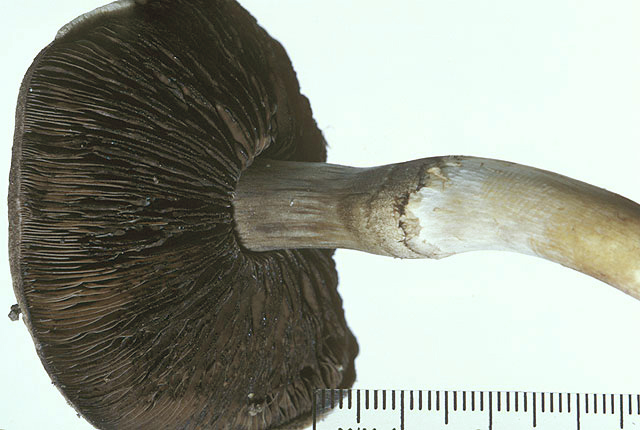
Drippy gill | Mushroom
DISEASE: Drippy gill
HOST: Mushroom (Agaricus campestris)
PATHOGEN: Pseudomonas agarici
SOURCE: J. Young
DISEASE: Drippy gill
HOST: Mushroom
Close-up of infected gills with bacterial ooze.
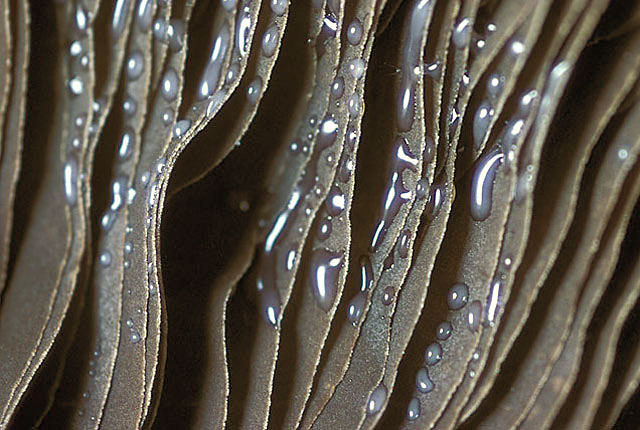
Drippy gill | Mushroom
DISEASE: Drippy gill
HOST: Mushroom (Agaricus campestris)
PATHOGEN: Pseudomonas agarici
SOURCE: J. Young


